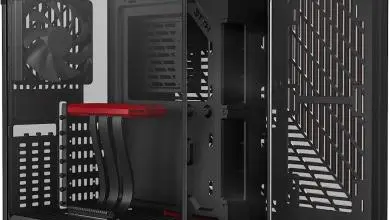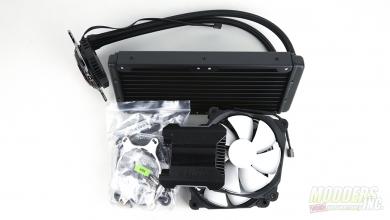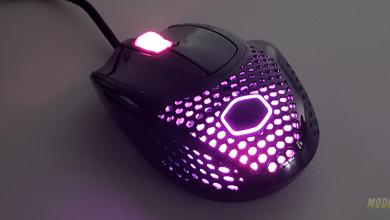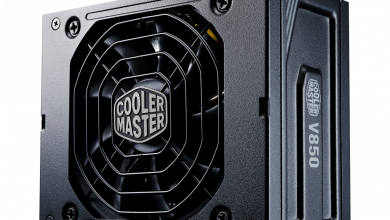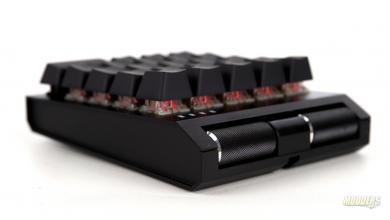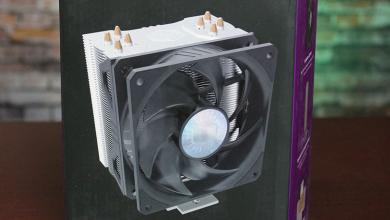CPU Cooler
Cooler Master V10 Hybrid T.E.C. CPU Cooler
« Intro | Page 3 »
A Closer Look |
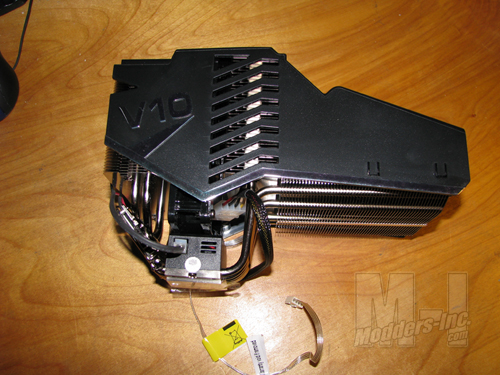 Looking at the side profile of the Cooler Master V10, we get a better idea of just how tall the cooler is. The V10 measures in at 9.3″ (236.5 mm) long x 5.1″ (129.6 mm) wide and 6.3″ (161.3 mm) tall. One might think that the length of the cooler is going to be the biggest obstacle, but the height of the cooler is going to pose the biggest challenge. The outer housing (black cover) of the V10 is made of plastic and is securely fastened to the cooler encasing the two 120mm fans that are rated at 800- 2400 RPMs. Just above the lower base you will notice the control box for the TEC side of the cooler.
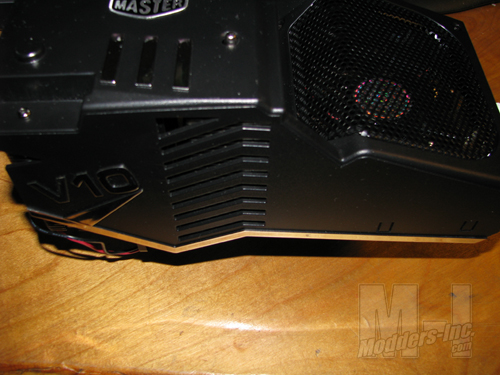 The second fan draws in fresh air from both sides of the V10 via the slotted vents on the side, as well as a large opening facing the other fan. With two 120 mm fans pulling up to 2400 RPMs, the noise levels could potentially be an issue for some. We will have to see how things turn out during testing.
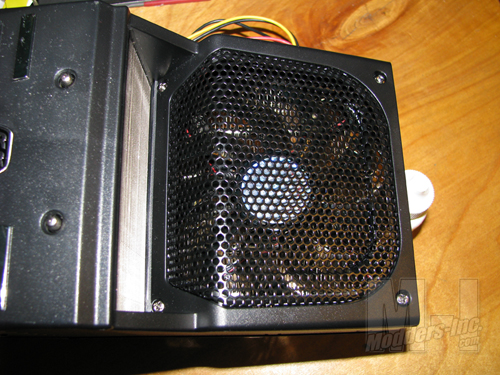 Looking straight down at the horizontal fan, we can see the intake area to the left of the grill for the vertical fan. This is definitely a unique design will hopefully perform just as well.
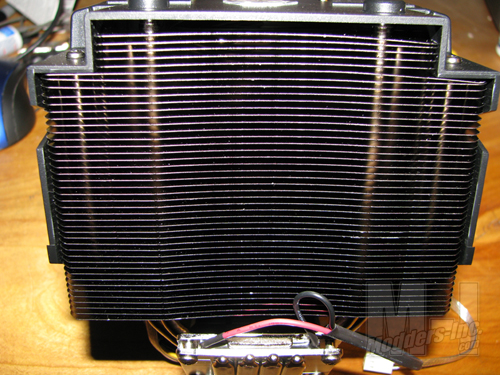 While the horizontal fan exhausts over the CPU / Memory areas, the vertical fan exhausts toward the rear of the case. Looking from this view we can see how the secondary fin arrangement is with the heatpipes. At the lower section of the image we catch a glimpse of the TEC itself. 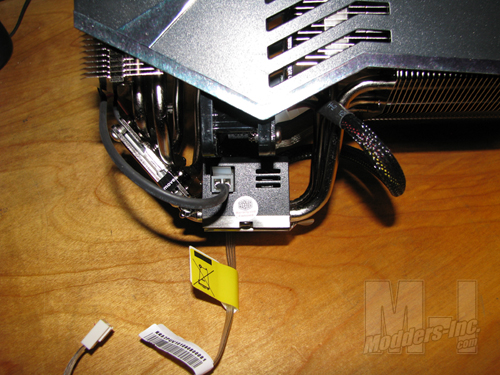 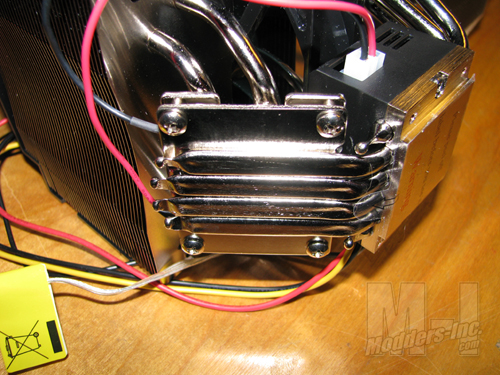 Cooler Master went a slight different way when setting up the Hybrid TEC cooling on the V10. As we have seen with most TEC coolers in the past, they generally mount the TEC itself directly over the base with the cold plate down. Cooler Master’s offering has the TEC mounted to the side of the base on four of the heatpipes. They then plumbed another set of the heatpipes up to the secondary cooling fin section. Will this degrade the cooling potential of the V10? Well, I definitely don’t think its going to cool as good as if it was mounted directly over the base. It does diminish the possibility of TEC causing the base to sweat a little.
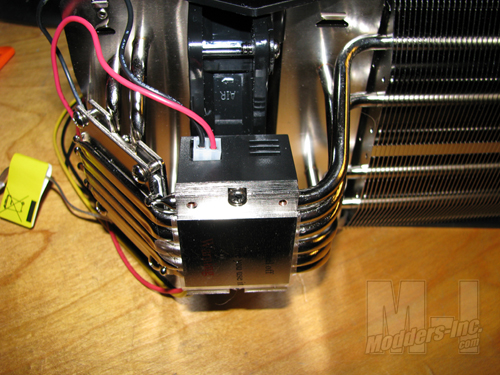 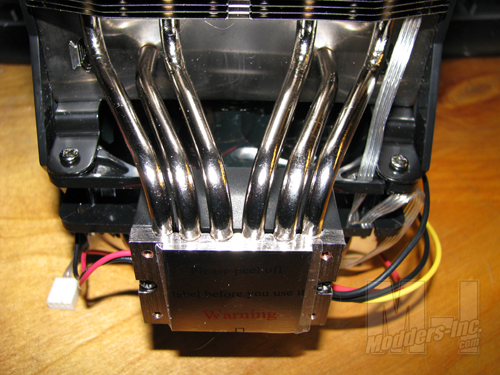 The TEC is basically working as a secondary cooler, which means that the V10 could be ran without the TEC being powered up. Although this is going to decrease the cooling potential a little as well. The black box mounted just above the base of the cooler is where the control board for the TEC resides. Having played with the Ultra Chill TEC in the past, I noticed fan pulsations that at times became annoying to say the least. As the Chil TEC changed the output for the TEC it also increased and decreased the fans RPM accordingly. Thankfully, Cooler Masters version doesn’t run the cooling fans through the control board. So this shouldn’t be an issue for us today.
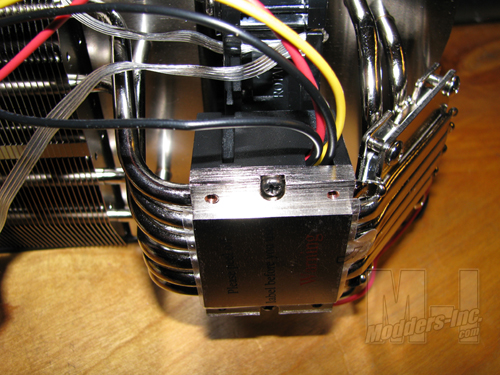 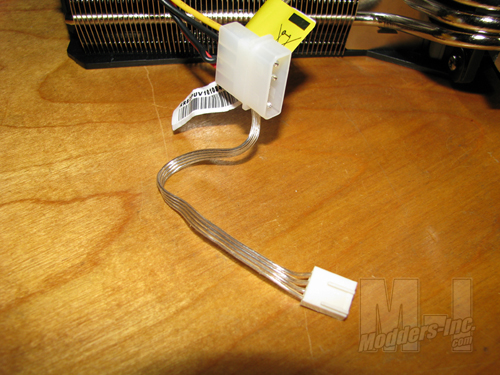 The TEC setup is powered by a single molex coming out one side of the control box, while the TEC itself plugs in on the opposite side. The two cooling fans though are wired together and only use one 4-pin fan connector. This might pose a little bit of a problem for those wanting to replace the stock fans with higher performing fans. It will take a little modification to allow them to draw power from the same connection. Just keep in mind that you will want to make sure you don’t exceed the motherboards fan header specifications, or you might possibly damage it.
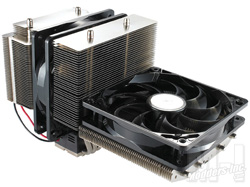 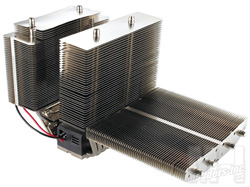 Here we have a couple of shots of the V10 without its outer cover installed. There are a total of 10 heatpipes on the V10 which are fed to three fin assemblies. Fin Assembly 1 (Horizontal) has four heatpipes coming from it to the main base of the cooler, two of which pass completely through and attach to the cold side of the TEC’s base. Fin Assembly 2 (Inner Vertical) has two heatpipes that pass through the main base and also attach to the cold side of the TEC’s base. Fin Assembly 3 (Outer Vertical) has four heatpipes which connect to the hot side of the TEC’s base. With the three cooling fin assemblies, it’s no wonder why the V10 is so HUGE.
|
